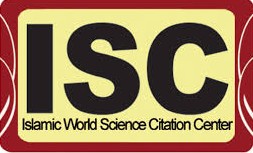أثر التنويع الاقتصادي على الاستثمار الأجنبي المباشر في المملكة العربية السعودية
DOI:
https://doi.org/10.35246/y5psh350الكلمات المفتاحية:
التنويع الاقتصادي، الاستثمار الأجنبي المباشر، صافي تدفقات الاستثمارالملخص
قامت المملكة العربية السعودية بتهيئة المناخ الاقتصادي وتنويع اقتصادها وتشجيع القطاع الخاص والعمل على زيادة مساهماته في المجال الاقتصادي ووضع الكثير من الحوافز والضمانات لزيادة تدفقات الاستثمار الأجنبي المباشر، وتم تقسيم الدراسة إلى ثلاث مباحث رئيسية تسبقها مقدمة وتعقبها نتائج وتوصيات، تناول المبحث الأول ماهية التنويع الاقتصادي أنواعه ومبرراته وأهدافه في مطلبين، المطلب الأول بعنوان تعريف التنويع الاقتصادي وأنواعه. والمطلب الثاني عن أهداف ومبررات التنويع الاقتصادي ثم المبحث الثاني ماهية الاستثمار الأجنبي أنواعه وأهدافه وأهميته في ظل رؤية 2030.حيث كان المطلب الأول بعنوان مفهوم الاستثمار الأجنبي وأنواعه وأهدافه، والمطلب الثاني حوافز ومعوقات الاستثمار الأجنبي في ظل رؤية 2030، والمبحث الثالث تناول أثر التنويع الاقتصادي على تطور الاستثمار الأجنبي في السعودية. في مطلبين الأول بعنوان علاقة الاستثمار الأجنبي بالتنويع الاقتصادي وصندوق الاستثمارات العامة.، والمطلب الثاني زيادة التنويع الاقتصادي وتطور حجم الاستثمار الأجنبي في السعودية.
التنزيلات
المراجع
First: Dictionaries:
I. Al-Maany Comprehensive Dictionary, www.almaany.com
Second: Books:
I. Shehata, Ibrahim, 2001, My Testament to My Country (Full Text), Cairo, Egyptian General Book Organization.
II. Abdel Salam, Reda, 2007, Determinants of Foreign Direct Investment in the Era of Globalization: A Comparative Study of the Experiences of Eastern and Southeastern Europe with Application to Egypt, Mansoura, Modern Library.
III. Abdel Hamid, Abdel Muttalib, 1st Edition, 2006, Economic Globalization: Requirements, Companies, and Implications, Alexandria, University Publishing House.
IV. Ismail, Omar Mustafa Jabr, 1st Edition, 2010, Investment Guarantees in Islamic Jurisprudence and Their Contemporary Applications, Jordan, Dar Al-Nafaes for Publishing and Distribution.
V. Shalaby, Magda Ahmed, 2012, Public Finance – Welfare Economics and the Role of the State in Achieving Resource Allocation Efficiency, Habib Printing House.
Third: Academic Theses:
I. Abdel Reda, Ahmed Abdel Razzaq, 2011, The Necessities of Economic Diversification, Kuwait, PhD Dissertation, Faculty of Politics and Economics, Kuwait University, Kuwait Technical Institute.
II. Saadi, Hind, 2017, The Impact of Foreign Direct Investments on Economic Growth in Arab Countries, M’sila, Algeria, PhD Thesis in Commercial Sciences, Faculty of Economic, Commercial, and Management Sciences, Mohamed Boudiaf University.
III. Al-Arabi, Shaimaa Saeed Dakhil, 2016, Foreign Direct Investments in Implementing Public Service Projects (2000-2012), Cairo, Unpublished Master's Thesis, Faculty of Economics and Political Science, Cairo University.
Fourth: Research Papers:
I. Al-Qweder, Amjad Salem Younis & Lataifah, Amjad Salem Qweder, 2014, Foreign Direct Investments and Their Impact on the Saudi Economy: An Analytical Study for the Period (1994-2008), Cairo, Saleh Abdullah Kamel Center for Islamic Economics, Al-Azhar University, Vol. 18, Issue 52.
II. Shabana, Amina Zaki, April 7-9, 1994, The Role of Foreign Direct Investment in Financing Economic Development in Egypt Under Market Mechanisms, Cairo, Egypt, The 18th Annual Scientific Conference of Egyptian Economists, Financing Development Under Market Economies.
III. Economic and Social Commission for Western Asia, 2001, Measuring the Success of Economic Diversification in the GCC Countries, New York, United Nations.
IV. Khidr, Hassan, 2004, Foreign Direct Investment: Definitions and Issues, Development Bridge Series, Kuwait, Issue 2004, Year 3, Arab Planning Institute.
V. Hashem, Khalid, 2018, Economic Diversification and Balanced Development in Saudi Arabia: Opportunities and Challenges, Cairo, Faculty of Economics Journal.
VI. Mohamed, Zidan, 2004, Foreign Direct Investment in Transition Economies – An Analytical View of Gains and Risks, North Africa Economics Journal, Issue 1.
VII. Abdel Salam, Fadia Mohamed, 2011, (Development Experiences in South Korea, Malaysia, and China: Strategies, Policies, and Lessons Learned).
VIII. Al-Shammari, Mayeh Shbeeb, 2010, Diagnosing Dutch Disease and the Foundations of Reforming the Rentier Economy in Iraq, Al-Ghary Journal, Issue 15, Vol. 3.
IX. Al-Beltagy, Mohamed Jaber Abdel Hamid, January 2020, The Role of Foreign Direct Investment in Achieving Sustainable Development in Saudi Arabia, Damietta, A Analytical Study, Faculty of Law Journal, Issue 41.
X. Khattab, Mohamed Abdel Latif, 2016, The Impact of Foreign Direct Investment on Domestic Investment in Saudi Arabia, Baghdad, Baghdad College of Economic Sciences University Journal, Issue 49.
XI. Hussein, Moawiya Ahmed, 2014/1435H, Foreign Direct Investment and Its Impact on Growth and Economic Integration in the Gulf Cooperation Council Countries, Jeddah, King Abdulaziz University Journal: Economics and Administration, Vol. 28, Issue 2.
XII. Al-Hafiz, Mahdi, 2007, Encouraging Investment and Enhancing the Role of the Private Sector in Iraq, Paper Presented at the Scientific Symposium – The Role of Foreign Investment in Arab Economies, Lebanon, Institute for Progress and Development Policies & Iraqi Businessmen Union.
XIII. Diplomatic Journal, 2023, Ministry of Foreign Affairs, Riyadh, Prince Saud Al-Faisal Institute, Issue 100.
XIV. Mabrouk, Nazih Abdel Maqsoud, 2008, The Economic Effects of Foreign Investments, 1st Edition, University Thought House.
Fifth: Regulations, Reports, and Conferences:
I. World Investment Report 2012: Towards a New Generation of Investment Policies, 2022, UN Conference on Trade and Development (UNCTAD), United Nations, New York and Geneva.
II. Mohamed, Saeed Sobeih Yass, 2018, The Role of Investment Law in Improving the Investment Climate and Development in Egypt, Research Paper Presented to the 5th Conference of Egyptian Legal Experts, Egyptian Society for Political Economy, Statistics, and Legislation, "The Role of Legislation in Achieving Sustainable Development Goals", November 4-6.
III. Al-Qasim, Abdul Rahman bin Abdul Aziz, November 1997, Legal Protection for Private Foreign Capital Invested in Saudi Arabia, Riyadh, Symposium on Private Foreign Investment in Saudi Arabia: Incentives and Obstacles, Institute of Diplomatic Studies, Ministry of Foreign Affairs.
IV. Hussein, Moawiya Ahmed, 2009, Foreign Direct Investment and Its Impact on Growth and Economic Integration in the GCC Countries, Riyadh, 17th Annual Meeting of the Saudi Economic Association.
V. Council of Ministers, July 2004, Information and Decision Support Center: "Proposed Policies to Attract Foreign Direct Investment to Egypt".
VI. Khateeb, Mamdouh Awad, 2014, Diversification and Growth in the Saudi Economy, Riyadh, First Conference of Business Schools in the GCC.
VII. Hashad, Nabil, 1996, GATT and the World Trade Organization, Cairo, p. 70 and beyond; also, Zein El-Din, Salah, 2002, The Impact of Globalization on Foreign Direct Investment, Cairo, 6th Annual Conference of the Faculty of Law, Mansoura University.
VIII. Ministry of Planning, 2000, Economic and Social Developments in the United Arab Emirates (1995-2000), Abu Dhabi, UAE.
Sixth: Websites and Online Newspapers:
I. Incentives Strengthen Saudi Arabia’s Experience in Attracting Investments, 2023, www.aljazeera.net.
II. Expert Committee of the Saudi Council of Ministers, Foreign Investment Law, law.boe.gov.sa.
III. Maal Saudi Newspaper, 23/10/2023, https://maaal.com/archives/202410/.
IV. General Authority for Statistics, Foreign Direct Investment Statistics 2023, stats.gov.sa.
V. Saudi Ministry of Investment, misa.gov.sa.
VI. Saudi Central Bank, www.sama.gov.sa.
VII. Nuzad Abdel Rahman Al-Heeti, Manufacturing Industries Still Lack Driving Force, available at http://www.alyaum.com/article/1106261.
VIII. https://ar.wikipedia.org, http://sapq.org.
Seventh: Foreign references:
I. Bertheelemy J. and Sodrling, I. (2001), "The role capital accumulation, adjustment and structural change for economic take off empirical evidence for African growth episodes", World development, 29(2), 55-63.
II. Brownlie, Principles of Public International Law (Oxford: Oxford University Press, 2003), P. 508.
III. Hvidt, M. (2013), "Economic diversification in GCC Countries: Past Record and Future Trends", Kuwait Programme on Development, Governance and Globalization in Gulf States, Number 27.
IV. Keir Eldine, H. (2001), "Economic Diversification, the Case of Egypt 1970-2000". Economic and Social Commission for Western Asia. Expert Meeting on Economic Diversification in the Arab World, Beirut.
V. Kevin Honglin Zhang, How does a host country's export performance affect? The case of china, Department of Economics, Illinois state University 2002, PP.2: 4, available at: http://www.saculty.washington.edu/karyiu/confer/ xian05/ pdf.
VI. M. Somarajah, The International law on Foreign Investment, third edition, Cambridge University Press, 2010, P. 409.
VII. Martin Hvidt, Economic Diversification in GCC Countries: Past Record and Future Trends, Research Paper, Kuwait Programme on Development, governance and Globalization in the gulf States, 2013, P.15.
VIII. OECD, Benchmark, Definition of foreign direct investment, OECD, 1996.
IX. Paterne Ndjambou, diversification économique territoriale : enjeux, determinants, strategies, modalités, conditions et perspectives, these de doctorate présentée à l’université de QUÉBEC à CHICOUTIMI,October,2013.
X. Pinto, Pablo M. and Zhu, Boliang, Fortune or Evil? The Effect of Inward Foreign Direct Investment on Corruption, International Studies Quarterly, Vol. 60, 2016, P. 693.
XI. Raghar Nurkse, Problems of capital formation in underdeveloped countries, Oxford University, New York, 1996, pp. 15-20.
XII. Seyed Komail and Amir Hortamani, The Impact of Trade Integration on FDI Flows: Evidence from Eu and Asian +3, University of Isfahan, Available at: http://www.univ-lehavre-fr/actu/itlege/pdf.
XIII. United Nations, Africa's the technology gap, case studies on Kenya, Ghana, Uganda and Tanzania, July 2003, P. 15.
التنزيلات
منشور
إصدار
القسم
الرخصة

هذا العمل مرخص بموجب Creative Commons Attribution 4.0 International License.
-
:حقوق الطبع والنشر والترخيص
بالنسبة لجميع البحوث المنشورة في مجلة العلوم القانونية، يحتفظ الباحثون بحقوق النشر. يتم ترخيص البحوث بموجب ترخيص Creative Commons CC BY 4.0 المفتوح ، مما يعني أنه يجوز لأي شخص تنزيل البحث وقراءته مجانًا. بالإضافة إلى ذلك ، يجوز إعادة استخدام البحث واقتباسه شريطة أن يتم الاستشهاد المصدر المنشور الأصلي. تتيح هذه الشروط الاستخدام الأقصى لعمل الباحث وعرضه.:إعادة إنتاج البحوث المنشورة من الناشرين الآخرين
من الضروري للغاية أن يحصل الباحثون على إذن لإعادة إنتاج أي بحث منشورة (أشكال أو مخططات أو جداول أو أي مقتطفات من نص) لا يدخل في نطاق الملكية العامة أو لا يملكون حقوق نشرها. يجب أن يطلب الباحثون إذنًا من مؤلف حقوق النشر (عادة ما يكون الناشر).يطلب الإذن في الحالات التالية:
بحوثك الخاصة المنشورة من قِبل ناشرين آخرين ولم تحتفظ بحقوق النشر الخاصة بها.
مقتطفات كبيرة من بحوث أي شخص أو سلسلة من البحوث المنشورة.
استخدم الجداول والرسوم البيانية والمخططات والمخططات والأعمال الفنية إذا لم يتم التعديل عليها.
الصور الفوتوغرافية التي لا تملك حقوق لنشرها.لا يطلب الإذن في الحالات التالية:
إعادة بناء الجدول الخاص بك مع البيانات المنشورة بالفعل في مكان آخر. يرجى ملاحظة أنه في هذه الحالة يجب عليك ذكر مصدر البيانات في شكل "بيانات من ..." أو "مقتبس من ...".
تعتبر عروض الأسعار القصيرة معقولة الاستخدام العادل ، وبالتالي لا تتطلب إذنًا.
الرسوم البيانية، الرسوم البيانية، المخططات، الأعمال الفنية التي أعاد الباحث رسمها بالكامل والتي تم تغييرها بشكل ملحوظ إلى درجة لا تتطلب الاعتراف.
الحصول على إذن
لتجنب التأخير غير الضروري في عملية النشر ، يجب أن تبدأ في الحصول على أذونات في أقرب وقت ممكن. لا يمكن لمجلة العلوم القانونية نشر بحث مقتبس من منشورات أخرى دون إذن.قد يمنحك مالك حقوق الطبع والنشر تعليمات بشأن شكل الإقرار الواجب اتباعه لتوثيق عمله ؛ بخلاف ذلك ، اتبع النمط: "مستنسخ بإذن من [المؤلف] ، [كتاب / المجلة] ؛ نشره [الناشر] ، [السنة]." في نهاية شرح الجدول ، الشكل أو المخطط.











